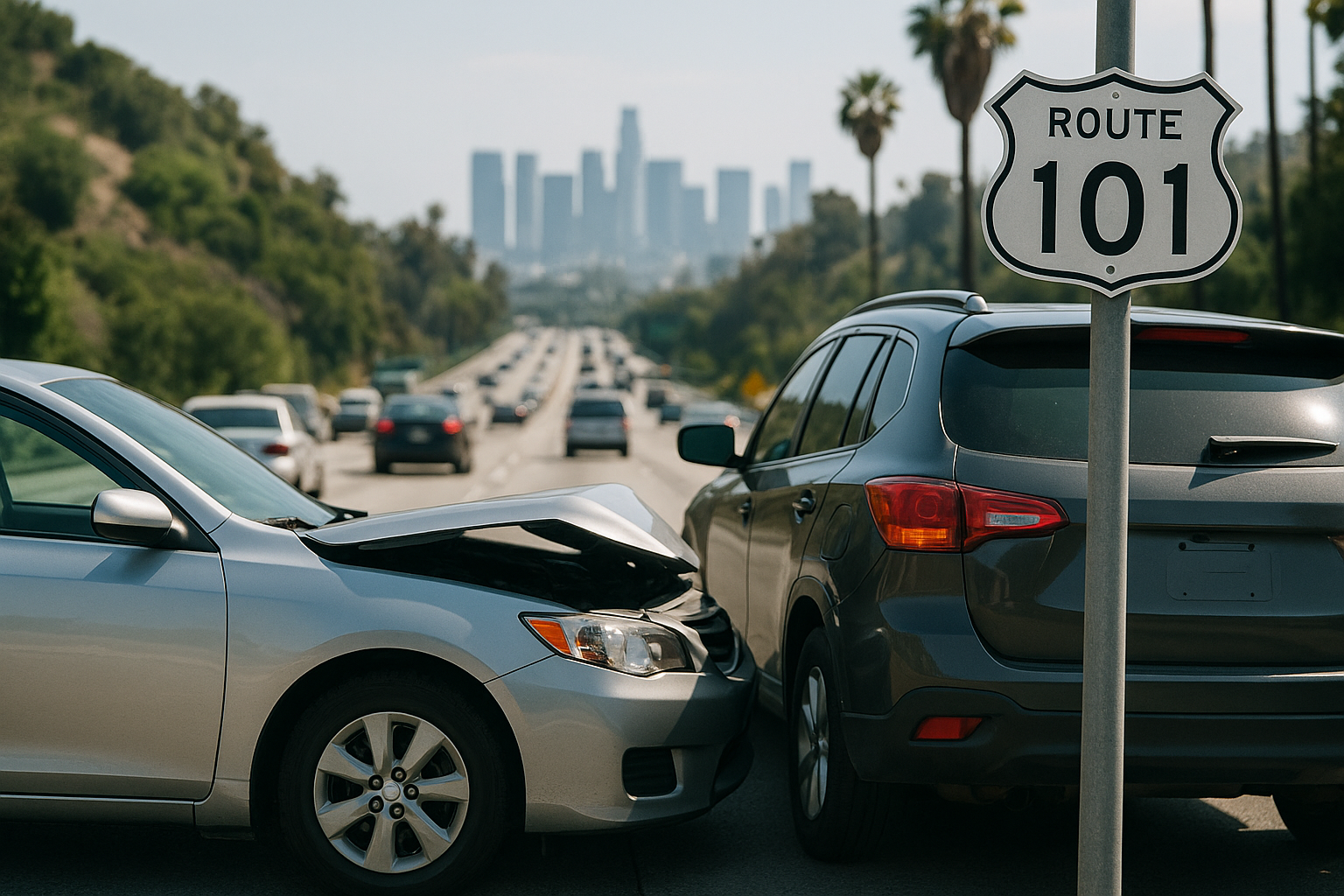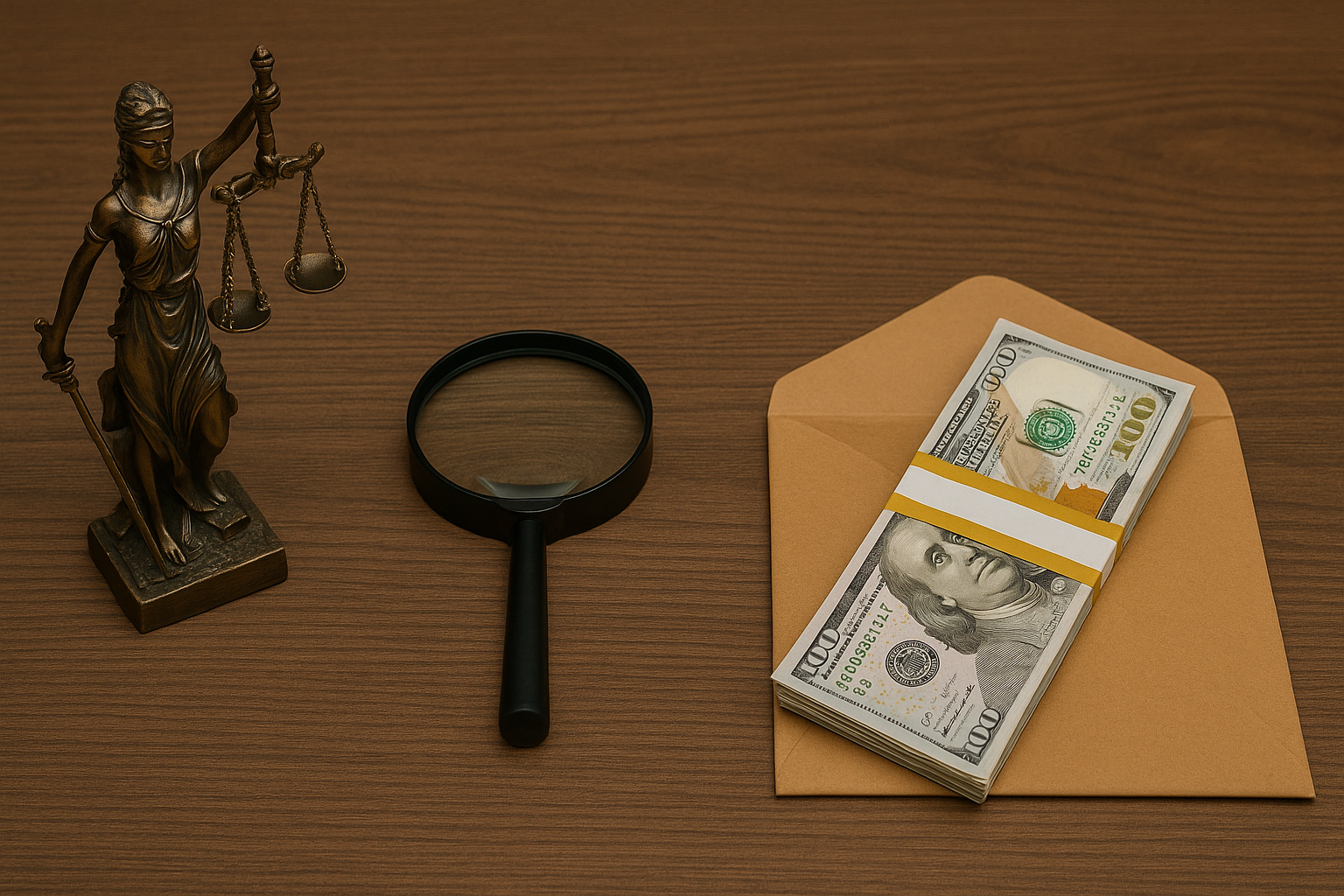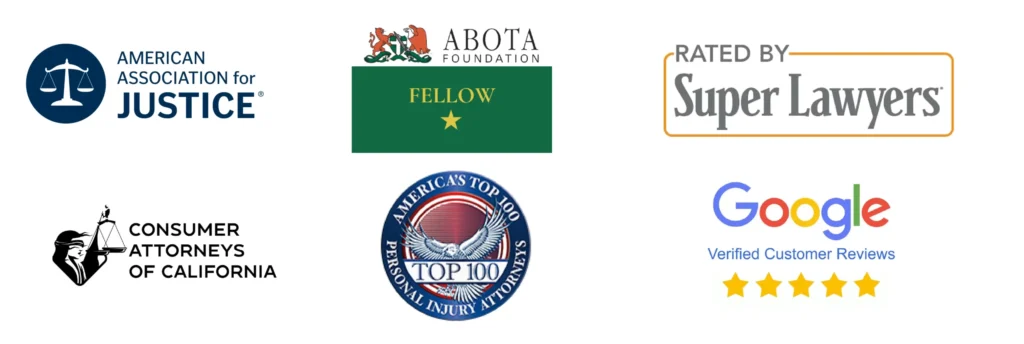Rear-end crashes are among the most common accidents on Los Angeles freeways, especially along the congested 101. These collisions may seem minor, but even low-speed impacts can cause serious neck injuries. In this guide, we’ll explore how to protect yourself physically, medically, and legally after a crash on the 101.
Why are rear-end crashes so common on the 101?
The 101 Freeway runs through some of the busiest parts of Los Angeles, including Downtown, Hollywood, and the San Fernando Valley. Frequent traffic jams, sudden braking, and distracted drivers create perfect conditions for rear-end collisions. Even at speeds below 25 mph, the sudden jolt can strain neck muscles and damage spinal structures.
What happens to your neck during a rear-end collision?
A rear-end crash causes your head to snap forward and backward in a split second. This sudden motion overstretches soft tissues in your neck, leading to whiplash or even more serious injuries such as:
- Cervical sprains and strains
- Herniated or bulging discs
- Nerve compression
- Fractures of the cervical vertebrae
These injuries may not be visible right away but can cause chronic pain or restricted motion if left untreated.
Symptoms of a neck injury after a rear-end crash
Neck injuries can vary from mild soreness to severe nerve pain. Watch for symptoms such as:
- Stiffness or loss of mobility
- Headaches or dizziness
- Shoulder or back pain
- Tingling or numbness in arms or hands
If you experience any of these signs after a collision, seek immediate medical attention. Early diagnosis helps prevent long-term complications.
How to protect your neck immediately after a collision
Right after a rear-end crash, adrenaline can mask pain. To reduce injury risk:
- Stay still if you feel pain – sudden movement may worsen the injury.
- Call emergency responders – they can assess whether your neck requires immobilization.
- Avoid removing your seatbelt until help arrives – especially if you feel disoriented.
- Document the accident – note details like vehicle speed and visible damage.
These actions not only safeguard your health but also create evidence for potential injury claims.
Should you always see a doctor after a rear-end crash?
Yes. Even if you feel fine, medical evaluation is essential. Whiplash symptoms often appear hours or days later. A doctor can perform imaging tests such as X-rays or MRIs to detect hidden damage. Having medical records from the day of the crash also strengthens your personal injury case.
How are neck injuries treated after a rear-end collision?
Treatment depends on the severity of the injury:
| Type of Injury | Common Treatments | Recovery Time |
|---|---|---|
| Mild whiplash | Rest, ice, physical therapy | 2–6 weeks |
| Herniated disc | Medication, chiropractic care, injections | 6–12 weeks |
| Severe nerve damage | Surgery, long-term rehabilitation | Several months |
Following through with your treatment plan is crucial for full recovery and for substantiating your injury claim.
How to prevent neck injuries while driving in Los Angeles
While no one can control every driver on the road, these steps can reduce your risk:
- Adjust your headrest properly. The top should be level with the top of your head.
- Maintain safe distance. Keep at least a three-second gap between you and the car ahead.
- Avoid distractions. Refrain from using your phone or adjusting the GPS while in motion.
- Stay aware of traffic patterns. Slow down in congested areas and anticipate braking.
Preventive habits not only reduce the chance of collisions but also minimize injury severity if a crash occurs.
What compensation can you seek after a rear-end crash?
Victims of rear-end accidents may qualify for compensation covering:
- Medical expenses
- Lost wages and reduced earning capacity
- Physical therapy and ongoing care
- Pain and suffering
Insurance companies may offer quick settlements, but these often fail to account for long-term effects like chronic neck pain or recurring headaches. A personal injury attorney ensures you pursue the full value of your claim.
What evidence strengthens a neck injury claim?
Comprehensive documentation helps prove the extent of your injury and the other driver’s fault. Strong evidence includes:
- Medical reports and imaging results
- Accident scene photos
- Witness statements
- Police reports
- Repair estimates showing vehicle impact
Keep a record of all treatments, symptoms, and missed workdays to demonstrate how the injury affected your life.
How does California’s fault law affect your claim?
California follows a pure comparative negligence rule. This means you can recover compensation even if you were partly at fault for the crash. However, your award will be reduced by your percentage of fault. For example:
| Your Fault Percentage | Total Damages | Compensation You Receive |
|---|---|---|
| 0% | $100,000 | $100,000 |
| 25% | $100,000 | $75,000 |
| 50% | $100,000 | $50,000 |
Having a skilled attorney ensures fault is properly assessed and that your rights are fully protected.
What should you avoid doing after a rear-end accident?
Certain mistakes can hurt your recovery or weaken your case:
- Delaying medical treatment. Insurance adjusters may argue your injury wasn’t serious.
- Posting on social media. Photos or comments can be used against your claim.
- Accepting early settlements. These offers rarely reflect the true cost of recovery.
- Not consulting a lawyer. Legal representation helps navigate complex insurance negotiations.
Avoiding these errors ensures your case remains strong and your health remains the top priority.
When should you contact a personal injury attorney?
If your neck injury affects your ability to work or perform daily tasks, contact a lawyer as soon as possible. The sooner an attorney reviews your case, the better they can preserve evidence and handle insurer communications. In California, most injury cases must be filed within two years, so acting quickly is key.
How Knapp Moss can help you recover after a neck injury
Rear-end crashes happen in seconds, but their consequences can last for years. By knowing what to do after an accident, seeking timely medical care, and partnering with a trusted law firm like Knapp Moss, you can safeguard both your health and your rights.
At Knapp Moss, our Los Angeles personal injury attorneys understand how painful and disruptive neck injuries can be. We handle every step of your claim—from gathering evidence to negotiating with insurers—so you can focus on healing. We’ve helped countless victims of freeway crashes on the 101 receive the compensation they deserve.
Contact Knapp Moss today for a free consultation and get the legal support you need to recover.
Frequently Asked Questions
It’s best to visit a doctor within 24 hours, even if symptoms seem mild. Delayed medical evaluation can worsen injuries and weaken your claim.
Yes. Whiplash and soft tissue injuries often take several days to develop. Keep monitoring your symptoms and document any changes.
You may still recover damages through your uninsured motorist coverage. A lawyer can guide you through filing this type of claim.
Timelines vary depending on injury severity and insurer cooperation. Cases can resolve within months or take longer if litigation is needed.
If your treatment is medically necessary and well-documented, it’s usually covered. However, insurers may dispute costs without proper records.




